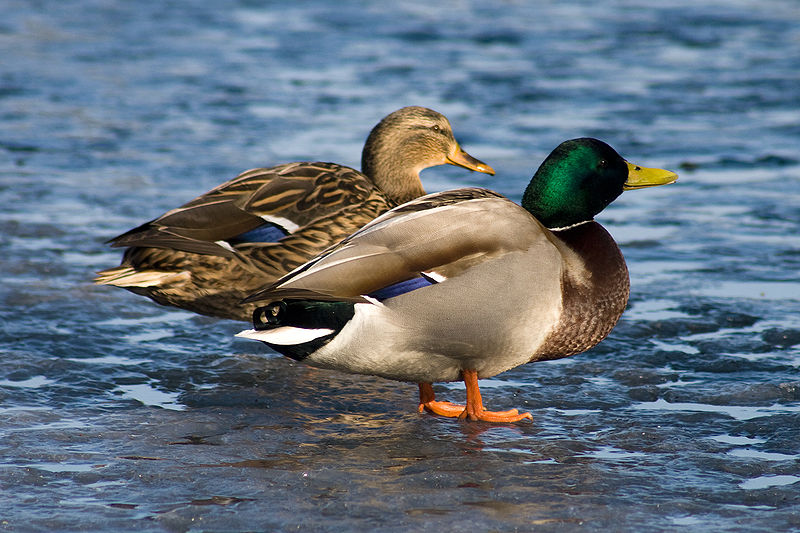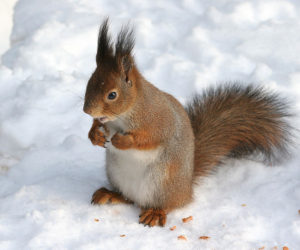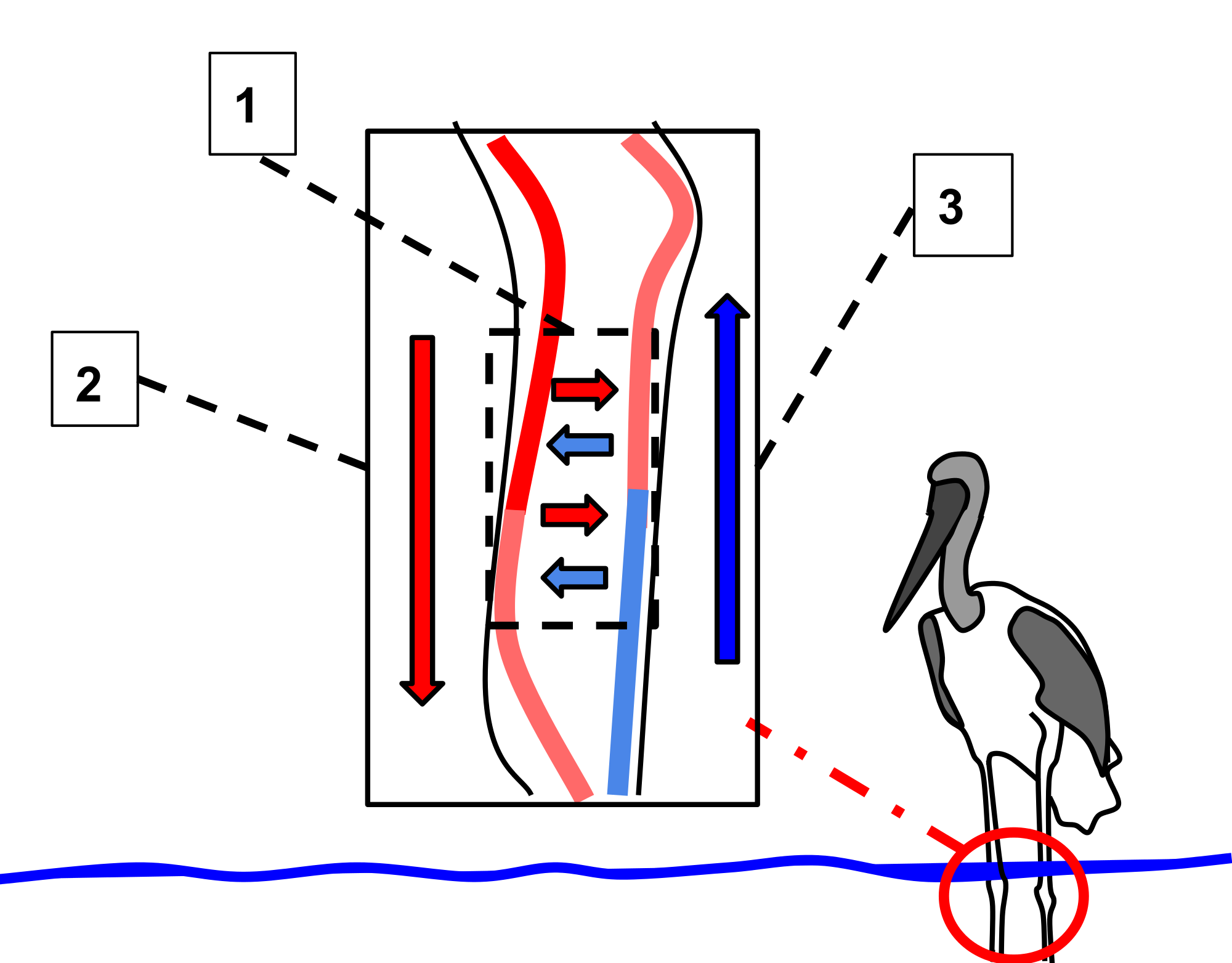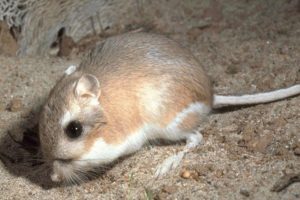Countercurrent Heat Exchange In Animals
Countercurrent Substitution in Nature

or "Why Ducks Don't Clothing Mucklucks"
Have you lot ever looked at a duck swimming in icy water and wondered how they do that without wearing dive booties? Or take you ever looked at a squirrel sitting in snow calmly eating seeds and wondered why it'due south not racing for the nearest heated mani-pedi spa? All animals have unique adaptations for dealing with cold, ranging from boosted fat stores to growing extra feathers and double coated fur, simply some animals have developed something called "countercurrent exchange." It'south a trait that animals who are active in farthermost conditions have converged upon every bit a way to deal with hot and cold temperatures, particularly in snow, ice, cold h2o, and even tropical pelting forests.
An animal'due south body is the hub of its body, and there are lots of ways it has to keep warm and cool; nonetheless, they have a unique problem. Their feet are far away from the main trunk of their torso, blood has to travel a ways to get at that place, and their limbs are frequently not as hirsuite or as thick as the main body. What'southward an fauna to do to keep those limbs warm in the winter and cool in the summertime without toes inconveniently dropping off? Information technology would exist easier if they could only Mr-Tater head their limbs on and off but they can't. The answer is to warm and cool those extremities efficiently while maintaining the minimum or maximum temperature for tissues to survive. To practice this many animals utilise countercurrent substitution.

WHAT IS COUNTERCURRENT Substitution?
Countercurrent exchange is a manner that fluids in the trunk tin alter their backdrop (remember that a fluid can exist liquid or gas). Countercurrent commutation:
- Tin be used to transfer heat, fluids, nutrients, or oxygen
- Occurs across semi-permeable membranes (the walls permit stuff through) of veins and arteries
- The fluids flowing through the veins and arteries has to be in close proximity and going in opposite directions (recollect of parallel race tracks or ii spans of a bridge with traffic going in different directions) for countercurrent commutation to happen
- In that location is a slope of "stuff" going in different directions (warm claret v. cold blood, warm air 5. cold air, depression oxygen blood five. high oxygen blood, etc.) in the exchange
HOW DOES COUNTERCURRENT Exchange Exercise THE "EXCHANGING"?
The best way to understand countercurrent exchange is past looking at a common instance, duck feet. Warm blood is coursing from the duck's body directly toward their common cold webby anxiety. If the blood flowed right out into the feet then what would happen? The warm blood would cool quickly and the duck would be using a lot of free energy to keep its feet as warm as its torso. As well, if the cold blood in the anxiety was going in a straight line to the heart to be warmed and re-oxygenated then the duck would be continuously common cold (and demand wee sweaters and boots). This would exist incredibly inefficient and could result in hypothermia. Instead, there is a complex network of veins and spread out along the leg where warm blood going to the foot meets cold blood coming from the human foot (call up that bridge illustration?).

The warm claret heats the returning colder claret, and the colder blood cools the warmer blood going out, there's the "gradient" I mentioned earlier. The feet are constantly cold, but but warm enough to keep tissues alive. The blood returning to the body is gradually warmed equally it moves from the legs and dorsum into the duck'south core.
WHAT ANIMALS USE COUNTERCURRENT EXCHANGE?
About of the time I think of countercurrent exchange in the winter, when I'm freezing my own tail feathers off, but it's non just ducks and water birds that have it. Here are some examples:
- Fish gills-exchange oxygen from the loftier oxygen environs of the water around them into the low oxygen environment of their bloodstream.
- Arctic foxes and wolves- apply countercurrent exchange to heat and absurd their feet so that they don't freeze in the ices and snow
- Jackrabbits- use this exchange in their ears to help cool their bodies

- Kangaroo rats- face dehydration in the desert, and don't desire to lose moisture by exhaling moist air from their lungs so they use countercurrent commutation to inhale dry air that is cooled and moistened on mode to lungs and quondam air is warmed and water taken out of it on the way out the nose
- Beavers. muskrats, and otters- apply countercurrent exchange to their extremities while pond in water
- Marine mammals- whales, seals, and sea lions use countercurrent commutation to rut and cool their extremities in and out of water (depending on the creature)
- Manatees- uses countercurrent heating and cooling in its tail to maintain body temperature in its thick and slow moving body
- Sloths- use countercurrent exchange their arm and legs to regulate their torso temperature
There are lots more examples in the fauna kingdom, these are just the tip of the iceberg, ranging from human kidneys to gazelle brains. Countercurrent exchange is an effective manner to heat and cool fluids in and out of the body. Humans tin can do it to some extent, just not besides as their vertebrate counterparts around the globe.

Next time you run across a duck in an icy lake, don't reach for tiny ducky-mucklucks; and if you encounter a squirrel sitting with its feet in the snow, don't worry about a squirrel foot warmer, they're all fine. Consider what an awesome accommodation countercurrent exchange is, and how astonishing nature can truly be when you lot look up close.
Countercurrent Heat Exchange In Animals,
Source: https://infinitespider.com/countercurrent-exchange-why-animal-feet-dont-freeze/
Posted by: smiththerhave93.blogspot.com


0 Response to "Countercurrent Heat Exchange In Animals"
Post a Comment